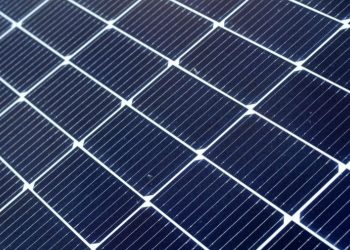Meanwhile, the automaker’s energy storage unit boosted revenues by 40%, according to its Q3 earnings report.
Leading electric vehicle provider Tesla reported its Q3 earnings, delivering $23.35 billion in revenues and $0.66 per share. This fell short of Wall Street expectations of $24.26 billion and $0.73 per share. Share prices have dropped nearly 10% following the quarterly report.
While the electric vehicle division makes up most of Tesla’s earnings, it is also a major player in residential solar and energy storage. The company deployed 49 MW of solar in Q3, 2023, peeling back from 66 MW in the previous quarter, and falling 48% from last year’s Q3 total.
Tesla is not immune to the heavy headwinds of regulatory changes and increased interest rates that are dealing damage to the U.S. residential solar sector.
Despite the pullback in solar deployment, the company’s energy storage business sustained significant growth to make up for the dip in solar sales. Storage deployments increased 90% year-over-year in Q3 to 4 GWh. The company deploys both Powerwall home energy storage and Megapack grid-scale batteries and is increasingly becoming involved in lucrative battery aggregation and grid services businesses, including the rollout of virtual power plants (VPP) in emerging markets like Texas.
“And as this business grows, the energy division is becoming our highest margin business. Energy and service now contribute over $0.5 billion to quarterly profit,” said chief executive officer Elon Musk on the earnings call.
The company debuted its Powerwall 3 battery in September, which is set to have its first commercial deployments in 2024. The unit will be DC-coupled with Tesla’s solar inverter, utilizing the inverter for grid connectivity. The combined solar and battery inverter can deliver up to 11.5 kWac of power.
Looking ahead, Tesla sees a huge runway for growth for solar, including rooftop solar. Its Master Plan 3 report proposes a need for 3 TW of solar generation in the U.S., including 15 million rooftops. There are less than 3 million single-family rooftops with solar installed across the U.S. today.
In addition to generation resources, the Master Plan estimates a need for 6.5 TWh of 8-hour lithium-ion batteries, 6.9 TWh of industrial thermal storage, and 418 GW of electrolyzers providing 107 TWh of hydrogen storage facilities in the United States. The plan also considers an additional 1.2 TWh of distributed stationary batteries as replacements for over 200 GW of existing backup generator capacity.
As for the macro financial environment, Musk issued warnings that heightened interest rates may lead to a bumpy road ahead. High rates have prevented Tesla from going “full tilt” on ramping up its new Mexico gigafactory.
“I’m not saying things will be bad. I’m just saying they might be,” said Musk. “And I think Tesla is an incredibly capable ship, but we need to make sure as — if the macroeconomic conditions are stormy, even if the best ship is still going to have tough times, the weaker ships will sink. We’re not going to sink. But even a great ship in a storm has challenges. Now that storm will apply to everyone, not just to us and not just to auto industry.”
This content is protected by copyright and may not be reused. If you want to cooperate with us and would like to reuse some of our content, please contact: editors@pv-magazine.com.


















